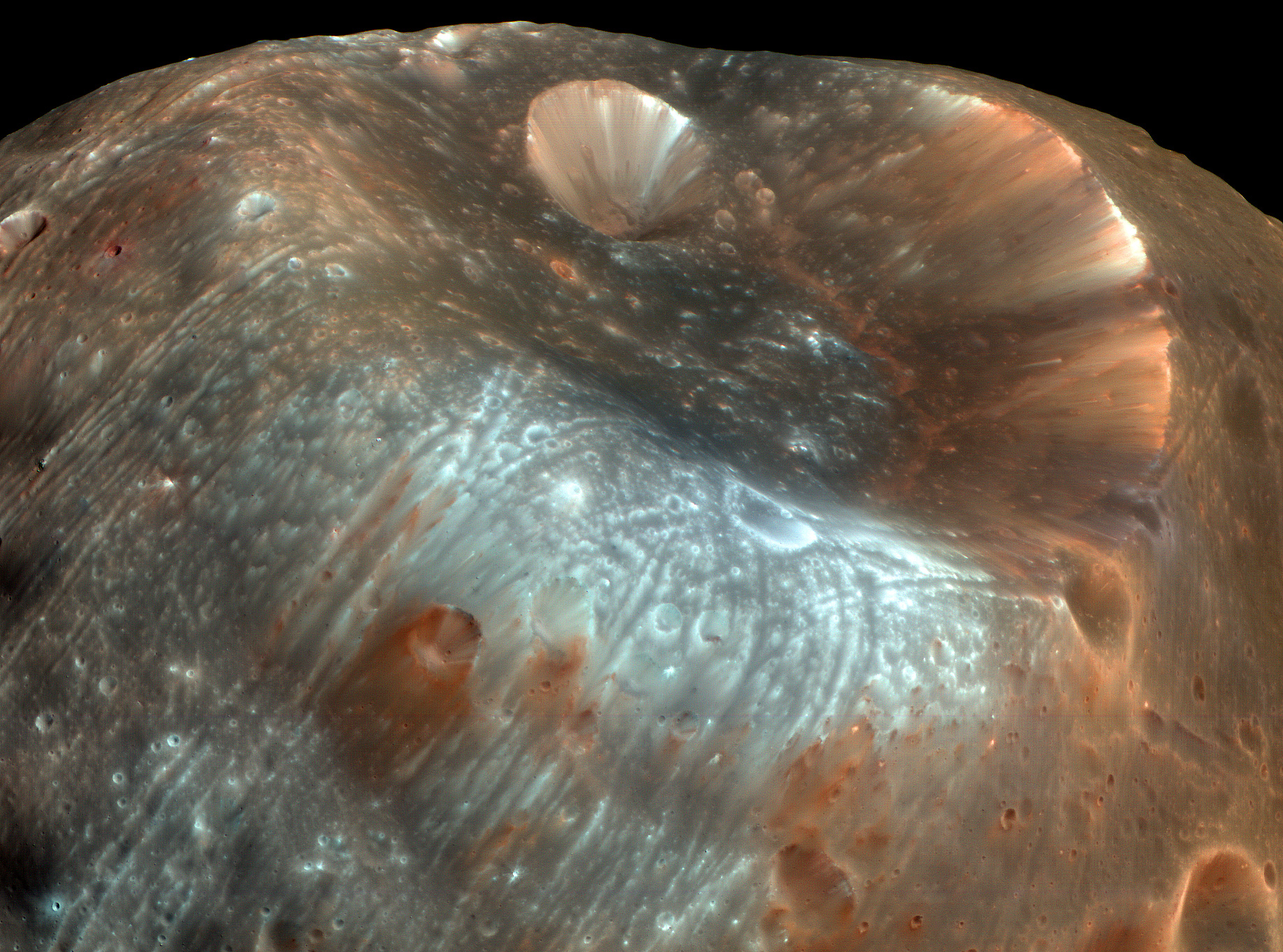The explanation of this asteroid and features presents a very large extrapolation for its past based upon limited observations and its current orbit and position, likely does not extend back 4.5 billion years ago but only more recently in the solar system.
The picture above shows that a large chunk is missing from the Martian moon Phobos.
Bennu was never a part of the main belt asteroids.
Clay is incredibly rare unless you are talking about an origin from a planetary body. There are plenty of types of igneous rocks that can turn into clay on Earth. Except those rocks usually do not form clays until they are close enough to the surface to contact surface moisture. A lot of terrestrial rocks (including igneous) would be considered “wet” by asteroid standards yet these processes do not occur.
The spitting rocks of Bennu are likely steam explosions from hydrated materials. The University of Arizona probably has data indicating this and neglected to mention it.
Bennu is a very young asteroid if the hydrated materials on its surface are still experiencing steam (or any kind of volatile) explosions. Mars has an abundance of hydrated rocks and has a relatively shallow gravity well. This would suggest that Mars or maybe Phobos was the origin for these hydrated materials.
The orbit shown below does suggest that Mars was the origin for the rubble that would become Bennu.




